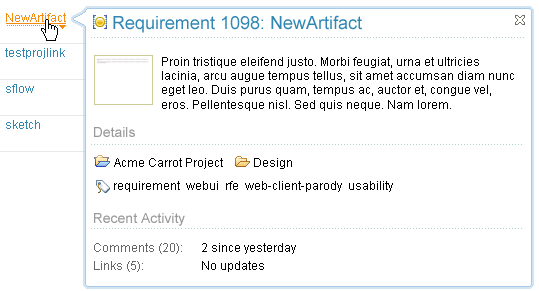I hit a very annoying issue using Audible.com on my Mac with iTunes and my iPhone. I thought I’d document it in case others hit it.
Setting the Stage
I got a MacBook Pro in early 2009. I buy audiobooks from Audible.com and store them in iTunes. From iTunes I sync the audiobooks to my iPhone so that I can listen to them while driving, cleaning, etc. The audiobooks are DRM-protected (urgh), so the first time you try to play an audiobook in iTunes it asks you to enter your Audible user ID and password. It then validates your Audible user ID and password and verifies that you have purchased the audiobook file. Once you have authorized your Audible.com account in iTunes, you never have to enter your Audible.com user ID and password again. Also, once you have authorized your Audible.com account in iTunes, you can sync audiobooks to your iPhone.
The Symptoms
Recently IBM got me a new 2010 MacBook Pro for work (thanks IBM) so I gave my 2009 MacBook Pro to my wife. So that I wouldn’t have to set everything up from scratch, I backed up my entire 2009 MacBook Pro to an external drive using Time Machine and then restored this configuration onto the new MacBook Pro. After a couple of hours of data transfer both ways, my new MacBook Pro was a clone of my old MacBook Pro, or so I thought.
Unfortunately I realized quickly that something was wrong with my Audible.com audiobooks. The first symptom was that none of my Audible.com Audiobooks were on my iPhone. I tried to play one in iTunes and it asked me to authorize my Audible.com account. This was a surprise because I would have expected the Time Machine backup / restore to have made this unnecessary (since my iTunes configuration was already authorized), so I typed in my Audible.com user ID and password, hit sync, and sure enough the ebooks synced successfully to my iPhone.
Later that week I noticed that the audiobooks had disappeared from my iPhone again!
The Bug
To make a long story short (too late), after some experimentation and support discussion with Audible.com, I discovered the following steps to reproduce the problem.
- Start iTunes
- Double-click an Audible.com audiobook
- iTunes prompts you to authorize your computer for your Audible account by asking you to enter your Audible.com user ID and password
- Enter Audible.com user ID and password and successfully authorize
- Sync iPhone
- Audiobooks copy successfully
- Close and re-open iTunes
- Sync iPhone
- Books are deleted from iPhone
Basically anytime I closed iTunes, my Audible authorization was lost. This indicated that authorization was succeeding but was not being persisted to disk. I sent the steps to reproduce to Audible customer support.
The Solution
As I suspected, it was a persistence problem. The Audible support person pointed me to the file /Library/Preferences/com.audible.data.plist (a Mac property list file) where (apparently) the Audible / iTunes code persists your Audible authorization information (I peaked in the file and it contained a single ‘data’ property whose value was 4 KB of encrypted something or other). Interestingly, even though I’d at this point authorized my Audible account in iTunes many times this week, the file’s date stamp was from last year, indicating the file wasn’t getting updated and thus my authorization went *poof* whenever I closed the iTunes application and its process died.
The Audible customer support rep first suggested to check the file’s permissions to make sure that my user account was authorized to modify the file. No problems there – I had read/write access to the file. Her second suggestion was simply to close iTunes, delete the Audible property file, open iTunes and reauthorize the computer. I did this and sure enough when I reauthorized the computer, a new property file was created with the current time as the timestamp and I was able to close and re-open iTunes without having to re-authorize.
Lessons Reiterated
This experience reinforces two software principles I already believed.
- DRM sucks ass
- Data persistence is hard
Solution Proposal
I sent the following suggestion to the Audible.com support person:
Thank you <redacted>. It’s working now.
FYI, it was not a permissions issue – the permissions were correct. I had to delete the com.audible.data.plist file and restart iTunes / reauthorize Audible to create a new version of the file.
I suspect this is related to my restore from Time Machine on to a new computer. I would suggest your engineers who work on the Mac iTunes integration test this case:
1. On a Mac, authorize to read Audible content via iTunes
2. Backup a Mac onto Time Machine
3. Restore from Time Machine onto a new Mac
4. Attempt to play Audible content
I’m not sure what the ideal behavior is (e.g. just working or requiring a single authorization of the new machine) but I know what should not happen is what happened to me 🙂
Thanks again for your help.
– Bill
